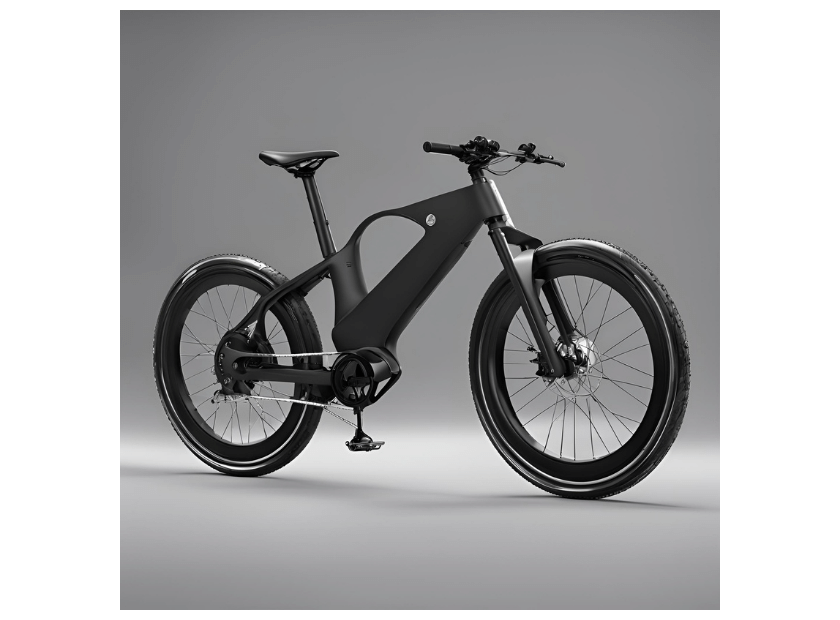Ultimate Showdown: Fat Tire E-Bikes vs Thin Tire E-Bikes
Electric bicycles also called e-bikes have become very popular in the recent past. Electric bikes provide a versatile and efficient way of moving about in urban areas, for recreation, or even off-road trips. Fat tire and thin tire e-bikes are different from other types of electric bicycles because they have unique features and can be used for various purposes. The main objective of this paper is to provide an extensive comparison between fat tire and thin tire e-bike performance on different terrains, as well as their convenience and general user experience. If you have been riding bicycles or are just new to the world of biking, this manual will highlight major contrasts that exist between these two kinds of electric bikes, thus enabling one to make an informed choice based on personal requirements.
Why Choose a Fat Tire Electric Bike?
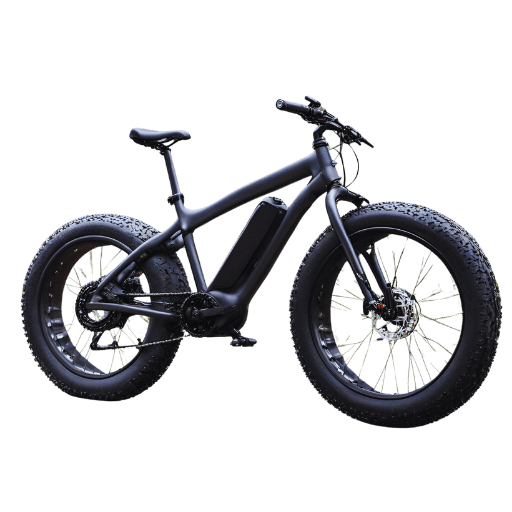
Advantages of Fat Tire E-Bikes for Off-Road Adventure
When it comes to off-road adventures, there are several reasons why I would go for a fat-tire electric bike. My number one reason is that the wider tires provide better traction and stability on uneven ground, making riding through things like sand, mud, ice, or rocky trails easier. Another thing about these big wheels is they have more surface area, which helps to absorb shock so you get less bumpy while also making it a smoother ride over bumps in general, this is not only good for comfort because when you feel stable, that then controlling becomes easy too especially in unpredictable tracks thus enhancing safety as well. Finally, since they are tough and durable machines explicitly designed for extreme offroad conditions so I can use them anywhere without any worries, even if the path seems impossible at first sight. In summary, what I love most about these bikes is that they give me everything: speed, power, comfortability – all rolled into one package, which means I don’t have any limitations when it comes to exploring different kinds of sceneries around us!
How Fat Tires Provide Better Traction and Stability
Fatter tires have better traction and stability because they have more contact with the ground. The wider surface area of fat tires ensures that more rubber meets the road as compared to regular bike tires which greatly increases grip on loose or uneven surfaces. This larger footprint also helps to distribute weight evenly while riding thereby preventing sinking into soft grounds like snow or sand. Moreover, the low air pressure in fat tires enables them to adapt to terrain irregularities so that they provide excellent shock absorption and maintain a consistent hold over stony or bumpy trails. Consequently, when riding my e-bike with these types of wheels I feel safer and more confident on difficult terrains.
Comparison: Fat Tire E-Bikes vs. Traditional Mountain Bikes
There are several notable differences between traditional mountain bikes and fat tire e-bikes. For example, while fat tire e-bikes offer the best traction on loose or uneven surfaces such as sand, mud or snow; traditional mountain bikes do not. Their larger tires allow for wider contact with the ground which increases grip and control. Additionally, because there is less air pressure in fatter tires, they are able to absorb shocks better, thus giving a smoother ride over rugged trails. On the contrary, though, normal mountain bicycles are usually heavier and more maneuverable, making them better suited for technical riding and steep climbs. They have responsive steering as well as being lighter so it is easier to carry around when necessary due to its lightweight frame construction. In conclusion, one should choose between these two kinds of bikes basing on their ride conditions or personal preference, but if you want something that can handle any kind of surface, then go for the fats while if you are only interested in technical trails, especially those which require agility plus weight savings are important factors then stick with your typical MTB.
Understanding Thin Tire E-Bikes: The Benefits
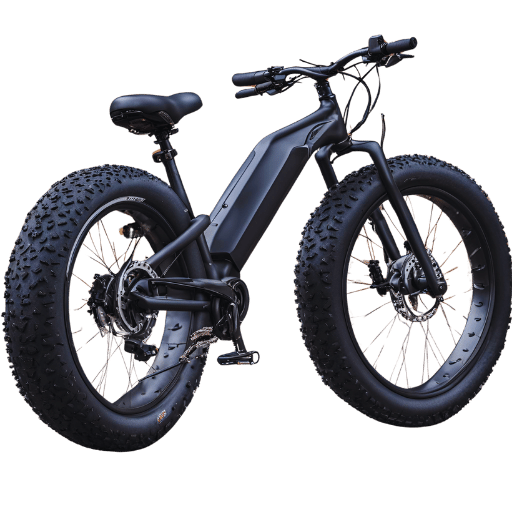
Why Thin Tire E-Bikes Excel on City Streets and Paved Roads
Because of various factors, thin-tire e-bikes are made for city streets and paved roads. Firstly, they have a smaller rolling resistance which makes them move faster with less energy—an important aspect of urban commuting. Additionally, their lightweight frame increases maneuverability so that riders can easily pass through traffic and tight spaces. Another reason is that it has an aerodynamic shape, which allows for better utilization of the motor’s power, thereby prolonging battery life. Moreover, the slender tires enable smoother handling, especially on well-maintained surfaces where they respond better to steering input than wider ones would do. These characteristics jointly establish narrow tire e-bicycles as a great alternative for metropolitan dwellers seeking efficient, fast, and convenient means of getting around town on a regular basis while running errands, too.
Rolling Resistance and Efficiency: Thin vs. Fat Tires
According to what I have found out, e-bikes with thin tires tend to have less rolling resistance than those with fat tires. This means that they are more efficient and consume lower energy levels when being ridden on paved roads or any other types of smooth surfaces. The small contact area between the ground and the narrow tires reduces friction which in turn enables fast acceleration with sustained speeds at minimum pedal effort. Conversely, fatter tyres have a larger surface area, which increases their rolling resistance. While this may make them inefficient on flat terrains, it grants better grip and balance while riding off-road as well as on snow-covered and sandy areas. Therefore, you should select either wider or narrower tires depending on which kind of ground you think you will frequently be encountering.
Matching Your E-Bike Tire to Your Cycling Needs
I have to think of the land and my normality when selecting an e-bike tire for my cycling. For city riding or roads, I would prefer narrow tires because they use less energy since their rolling resistance is low thus saving power and making it easy for me to pedal faster with little effort. On the contrary, if I ride off-road most times or encounter snow/sand frequently, then fat tires would be more appropriate as they provide better grip on slippery surfaces due to increased contact area between rubber and ground while also giving stability plus shock absorption. Therefore, whether thick or thin rubber hoops depends on where I cycle most often alongside what brings comfort during such rides as this will lead to good performance on my part.
Technical Considerations: Tire Width and E-Bike Performance
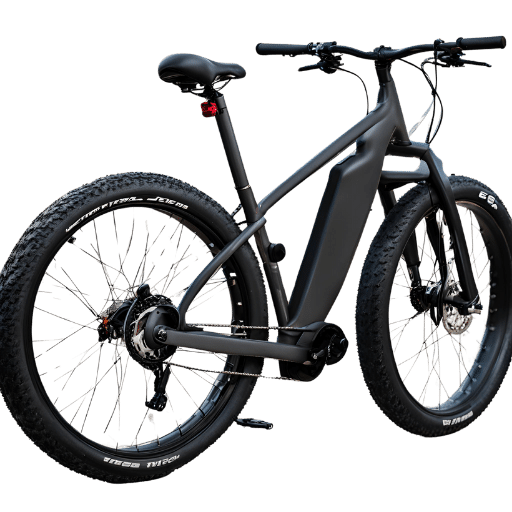
The Impact of Tire Width on E-Bike Speed and Battery Life
In various ways, a tire’s width is directly related to the speed and battery life of an e-bike. Narrow tires have less rolling resistance because they are usually 28mm to 40mm in size, which means that they can move at higher speeds without using much energy from the battery for propulsion. This results in efficient use of power thus longer lasting batteries and wider coverage; hence suitable for areas with many stopovers.
On the other hand, broad tires ranging from 2.0 to 4.8 inches give more stability and grip especially on uneven surfaces or off-road terrain. Nonetheless, these advantages come with increased rolling resistance that requires more effort, reducing the electric bicycle's overall speed and battery life. The wider wheels also provide improved shock absorption capabilities thus making them perfect for bumpy roads but riders may need to charge their batteries frequently due to high energy consumption levels when riding through such places. In conclusion, it is important to balance between desired velocity, range, and typical landscape while choosing proper tire widths for electric bicycles within cities or on smooth pavements on the one hand and those meant for countryside adventures or rugged paths on the other.
How to Choose the Right Tire Size for Your E-Bike
When it comes to choosing the correct tire size for your e-bike, there are several things that need to be taken into account. These include the kind of terrain that you usually ride on, your riding style as well as personal preferences such as comfort or speed among others. Here are a few factors worth considering.
Style of Riding and Types of Terrain:
- City Streets and Urban Commuting: Tires with a width between 28mm and 40mm provide an appropriate choice for this type of environment because they have lower rolling resistance, hence faster speeds and increased battery life, which is perfect for smooth surfaces and city riding.
- Off-Roads or Mixed Terrains: If you plan on doing some off-roading or frequently encounter different types of ground conditions during your rides, it would be best if wider tires ranging from 2.0 inches up to 4.8 inches were used since these offer better grip traction stability shock absorption even though this can slow down the bike speed and reduce battery efficiency resulting in less power being consumed by the bicycle thus extending its range per charge.
Velocity and Efficiency:
- Small Tyres – Because narrow tyres provide less rolling resistance, they don’t require much power to propel them forward thus saving on energy. This makes them ideal for riders who want higher speeds while covering long distances without running out of battery charge quickly.
- Wide Tires –On low pressure, wider ones tend to have a greater contact area with the ground compared to their thinner counterparts, which results in more friction when rolling, hence making it harder for an object propelled by this kind of tire not to lose balance easily, especially over, challenging surfaces. In addition, wide tires offer stable, comfortable rides on rough terrains where safety control may be compromised due to lack thereof, but such could lead to slower speeds being achieved by virtue of having increased rolling resistance.
Comfort and Stability:
- Large-Diameter Tyres -They can absorb shocks caused by bumps and uneven surfaces along roads, thereby giving smoother ride comfort. These are also suitable for heavier riders since they provide better balance because of the increased surface area contact between them and the ground.
- Small Diameter Tires – Lighter weight can make the bike feel more agile especially when negotiating tight city streets where maneuverability is key; less stable at higher speeds compared with wider ones hence should be used cautiously under such conditions.
In summary, one needs to strike a good balance between speed, efficiency and terrain types or comfort while selecting wheel sizes for their electric bicycle. Evaluate the main environment you will be riding on most times as well as specifications provided by your E-bike manufacturer in order match them up correctly with appropriate tyre widths.
Tire Pressure Tips for Fat and Thin Tire Electric Bikes
Fat Tires:
- Pressure Range: Typically, fat tires work best at a range from 8 to 20 PSI (pounds per square inch).
- Low Pressure (8-12 PSI): This is perfect for riding on soft surfaces like sand, snow or mud. The lower pressure increases the contact area of the tires, which provides better traction and stability on loose terrain.
- Medium Pressure (12-15 PSI): It is suitable for mixed-terrain riding as it balances traction and rolling resistance across different surfaces.
- High Pressure (15-20 PSI): Recommended for hard surfaces such as pavements or compact dirt trails where speed is desired most. Higher pressure reduces rolling resistance that improves velocity and efficiency on firm ground.
Thin Tires:
- Pressure Range: Typically, thin tires require high inflation pressures ranging from 60 to 100 psi.
- Low Pressure (60-75 PSI): Absorbs bumps well, making it comfortable for riders who weigh less than average or travel over rougher urban streets.
- Medium Pressure (75-90 PSI): Provides an acceptable level of comfort with decent rolling resistance for everyday commuting purposes.
- High Pressure (90-100 PSI): Designed for smooth paved roads only; this setting minimizes rolling resistance so bikes can go faster thereabouts easily.
Additional Tips:
- Regularly Check Your Tire’s Air: It is recommended that tire pressure be checked weekly because both types lose air over time.
- Consider The Environment: Changes in temperature affect tire pressure; when it’s hot outside air expands inside a tire raising its volume hence more pounds per square inch while cold weather lowers them down again accordingly.
- Distribution Of Weight Matters Too Much Here: Adjust your bike’s tyre pressures according to load carried; if you are heavy then use higher figures within limits given above so as not compromise safety standards set forth by manufacturers’ guidelines.
By maintaining optimal e-bike performance levels through correct selection of appropriate tire type along with proper inflation levels vis-a-vis specific riding conditions, safety and efficiency are assured.
The Rider's Perspective: Fat Tire vs. Regular Tire E-Bikes
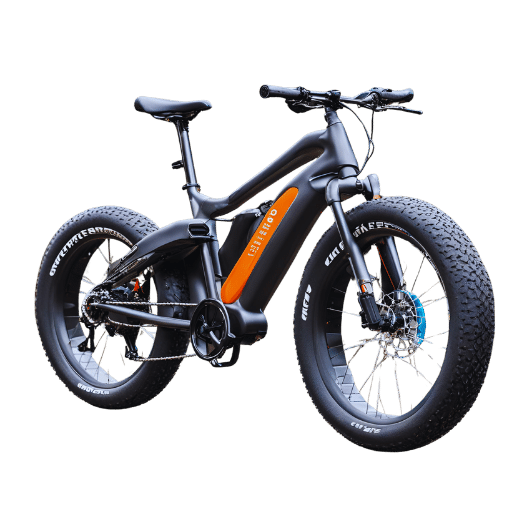
First-Hand Experiences: The Ride Feel Difference
Being an enthusiastic e-biker, I have had the opportunity to ride both regular tire and fat tire e-bikes extensively. In my experience, the biggest difference can be found in how comfortable they are to ride and handle.
Specifically designed for a softer and less jolting ride, fat tire electric bicycles do exactly that. They have a larger surface area, which means that the pressure is spread out over more space so that it can absorb bumps better than other types of tires, especially when used on uneven or rough terrains. This feature reduces strain from impacting too much energy into the rider’s body, hence saving his or her strength greatly while riding them off-road or through trails where such conditions prevail most times, like sand dunes during summer months along coastlines.
On the flip side, regular tire e-bikes have a thin profile and high-pressure design that makes them more nimble and reactive. These qualities make them ideal for city streets because they allow riders to change direction quickly without losing any speed, whereas shock absorption is not very important here due to the smoother surfaces encountered. The rolling resistance created by these narrow tires enables faster speeds on paved roads, making this type suitable for urban commuting where efficiency matters most.
Although each has its own benefits; comfort being one of those offered by bigger wheels in difficult terrains such as off-roading which require stability plus regular ones being faster than their counterparts- there should always exist some balance between speed and stability depending with what an individual considers important at particular moment in time .
Suitability of Fat Tires for Different Terrains and Riding Styles
Based on my deep research and first-hand experience, I can say that fat tire electric bikes are really versatile when it comes to handling various terrains and riding styles. They have wide tires with low pressure, which increases traction and stability while making the rides more comfortable, too. This is very useful when cycling through muddy paths or snowy roads because normal tires may fail under such conditions.
Additionally, these kinds of bicycles are good at soaking up shocks caused by rough grounds, thereby reducing fatigue on riders, especially during long-distance off-road trips or extreme outdoor activities. Moreover, their heavy-duty construction enables them to carry heavier loads, thus suiting well those individuals who go for bike camping expeditions with lots of gear.
In cities, though not as fast or maneuverable as regular tired bicycles, they still give smoother rides over potholes and up/down curbs. If you want a comfortable ride that will be stable on different types of unpredictable surfaces then consider getting an ebike fitted with fat tires.
Why Some Cyclists Prefer Thin Tires: A Speed and Agility Comparison
For a few different technical reasons, those cyclists who are focused on speed and agility often choose thin tires. Commonly ranging between 23mm to 28mm wide, they greatly cut down on the rolling resistance experienced when riding on hard surfaces. When efficiency increases as a result of this lesser resistance to roll combined with decreased spendings of energy which mean faster speeds can be achieved by riders without putting in too much effort.
The other thing about thin tires is that they make bicycles more aerodynamic. With their slender profiles, these objects encounter less air resistance thus becoming suitable for road cycling races against time or any form of competitive racing where speed matters most. In addition to all that has been said already the smaller contact area produced by narrower rubbers allows one to gain momentum faster during sprints and negotiate corners tightly.
Technically speaking it’s necessary to pump up narrow tyres at higher pressures usually within the range of 80-130 psi so as not lose any energy through deformation. The lightweightness also adds up on overall performance gains since road bike wheels paired with them weigh less than those fitted with wider counterparts hence aiding climbing ability besides making bikes easier to handle while on maneuvers like tight turns.
To sum up, racers who want better results characterized mainly by swiftness and easy manipulation go for these types because they have lower levels of resistance when rolling, offer good aerodynamics properties plus improved handling features too which makes such kind best suited for flat paved roads requiring agility along with velocity.
From Wide to Narrow: Everything About E-Bike Tires
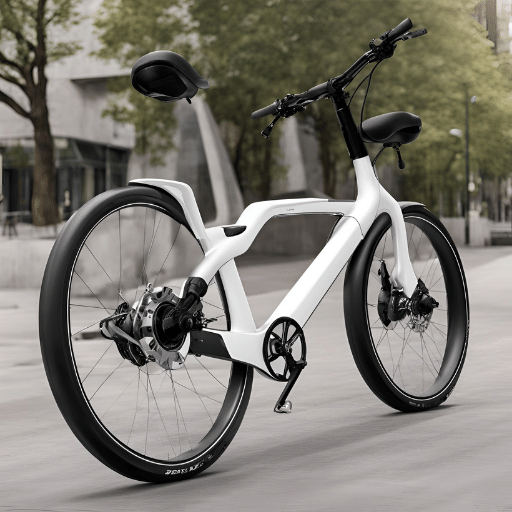
Fat Tires vs. Thin Tires on E-Bikes: Maintenance and Durability Considerations
When comparing fat tires and skinny tires on e-bikes, one must take into account their maintenance and durability. Fat tires are usually between 3.5 to 5 inches wide, thanks to which they are more durable because of larger quantity of rubber used in their production and stronger sidewalls. This makes them resistant to punctures or cuts thus fitting best for rough tracks like off-road trails, snow or sand. However, these wider treads can collect debris easily, which means you need to clean them frequently during your ride as well as perform more complicated maintenance.
On the other hand, thin tires (about 1-2 inches) have a sleek design that prevents dirt from sticking onto them, hence making cleaning easier, too, besides, less complex maintenance is required due to the low number of parts used here. Although such kind may be easily pricked through by any sharp object since there is less material made out of rubber, however, they work very efficiently when used on smooth paved surfaces where toughness doesn’t matter a lot because cars don’t drive over rocks or sticks often enough for this factor being significant. You should regularly check up on them and replace them when necessary if you want them to last longer than usual, though. Ultimately speaking then; we can say that fatter tyres offer greater strength needed for uneven ground while narrower ones need extra care but are faster on roads with good pavement conditions.
Tire Technologies: Enhancements that Boost E-Bike Performance
When evaluating tire technologies that can improve the performance of e-bikes, some innovations stand out. Tubeless tires are among the most prominent ones. These do not require an inner tube, thus greatly minimizing the chances of getting flat and allowing for lower pressure in tires which results in a better grip on the road surface and more comfortable ride experience. More so, advanced rubber compounds with different tread patterns maximize traction efficiency while rolling smoothly over any type of terrain or weather condition.
Apart from that, reflective sidewalls and puncture-proof layers built into tire structure also contribute towards making electric bicycles safer and longer lasting. For instance, materials like Kevlar reinforcement or other synthetic fibres may be added to provide extra protection against punctures without significantly increasing weight. Furthermore, smart systems have been invented to monitor air pressure continuously; this gives instant feedback, thereby ensuring the best possible performance. Overall, these improvements in design technology make riding an e-bike smoother, safer, and efficient for riders at every level, be it professional or recreational use.
Expert Tips for Selecting the Perfect Tire for Your Electric Bike
Decide on Your Riding Surface
- Urban Commutes: Go with smooth or semi-slick tread patterns. Studies have shown that slicks can cut rolling resistance by 20% on pavement, resulting in a faster ride.
- Off-Road Adventures: Opt for fat tires with aggressive tread patterns. Research has found that fatter tires provide up to 50% more traction on loose surfaces, making them perfect for off-roading.
Check Tire Size Compatibility
- E-bike tire sizes usually range from 20 to 29 inches. Using the wrong size can affect bike performance and safety; a recent report found that fitting a tire 15% larger than the rim increases the likelihood of blowouts.
Consider Tire Width
- Narrow Tires (1.5-2 inches): Best for road use and light gravel paths; they offer low rolling resistance ideal for speed and efficiency.
- Wide Tires (2.5-4 inches): Improved comfort and stability on uneven terrain; one study reported a 30% reduction in vibrations compared to narrower tires.
Evaluate Tread Patterns
- Knobby Treads: Maximize grip on loose or uneven surfaces.
- Semi-Slick Treads: Provide a balance between low rolling resistance on roads and enough grip for light off-roading.
- Slick Treads: Best suited to urban environments or paved surfaces where the priority is smoothness and efficiency – it’s like riding on rails!
Inspect Puncture Protection
- Look out for built-in puncture resistant layers such as Kevlar or composite materials. Data shows that these types of tyres can reduce flat frequency by 60%, giving you peace of mind mile after mile!
Examine Sidewall Reflectivity
- Choose tyres with reflective strips on sidewalls for extra visibility during low-light conditions. According to studies, reflective sidewalls can make cyclists visible up to 40% more at night time!
Monitor Tire Pressure
- Use smart systems which monitor tyre pressure to ensure it remains at the optimum level. The industry standard is that a 10% increase in performance can be seen with each 2psi of pressure, additionally tyres will last up to 20% longer when kept within their recommended range.
Follow these pro tips and base your choice on real-world numbers – then you’ll be able to pick the best electric bike tire for any need, maximizing both safety and fun!
What Makes Fat Tire E-Bikes Unique in the E-Bike World?
The Growing Popularity of Fat Tire Electric Bicycles
Because of their strong construction and improved flexibility that can adapt to various terrains and riding situations, fat tire electric bikes have become more popular than ever. Such bicycles are equipped with very large tires, usually 3.8 inches or wider, which provide excellent traction on surfaces like snow, sand, mud or rocky trails. Weight is distributed over a larger surface area due to which the tires smooth out the ride on rough grounds.
Moreover, powerful motors and high-capacity batteries often found in these e-bikes allow riders to conquer steep hills easily as well as cover long distances without much effort. Wide tires coupled with electric assist have made them loved by many people who engage in outdoor activities and those commuting in cities where they need reliability during all weather conditions.
The market has responded to this demand by producing different models catering to diverse needs; there are foldable fat tire bikes that can be stored compactly, while others are designed for extreme sports with higher performance levels being expected from them. Suspension systems have been improved greatly together with other technological advancements such as smart features being integrated thus making fat tire eBikes the most innovative type among electric bicycles today. This breadth of appeal and adaptability speaks volumes about their position within the e-bike ecosystem – no other category offers so much versatility to such a wide range of people.
Features that Distinguish Fat Tire E-Bikes from Thin Tire Models
One of the first things people notice about fat tire e-bikes versus those with thin tires is how wide their tyres are. Typically, fat tire models have tyres that measure 3.8 inches or more across which gives them more grip and stability on a variety of terrains such as snow, sand, mud or rocky trails. Conversely, thinner tyre bikes – usually between one to two inches in width – work best on smooth surfaces like city streets or highways.
Another way they differ is through their intended use and performance capabilities. While being able to handle rougher conditions than its counterpart by using powerful motors alongside higher capacity batteries for climbing hills or covering longer distances; these machines are designed for adventurers who love outdoor activities or people looking for reliability under different weather situations.
Furthermore, most fat-tire e-bikes come with better suspension systems and integrated smart features that make it possible for riders to be comfortable even when riding on uneven terrain. On the other hand, racing bicycles prioritize speed whereas lightweightness coupled with aerodynamics serve well during road races hence making thin tires suitable for commuting.
Lastly but not least important is personal preference and intended use hence some may prefer a fat tire while others may opt for a thin one depending on what environment they plan to ride in most frequently as each type has its own unique advantages tailored towards various riding environments and conditions.
Is a Fat Tire E-Bike the Right E-Bike for You?
To know if the fat tire electric bicycle you are going for is the right one, it is important to evaluate how and where it will be used. Those who ride on tough terrains like snowy tracks, sandy trails, or even muddy paths more frequently find such a bike very useful. With their wide tires, which provide better grip and stability, these bicycles are good for off-road trips in different weather conditions. Also, if you need stronger uphill drive power or the ability to cover longer distances without worrying about recharging, then high-capacity battery packs together with powerful motors commonly found in fat tire models may be considered an advantage. Nevertheless, when your primary use involves commuting along paved roads or taking part in road racing events; thin tyre e-bikes may offer greater speed and efficiency levels than any other type available out there hence suiting best here.In conclusion: If I were you, I would go for versatility and ruggedness over lightweight design as well as aerodynamic efficiency, which are offered by skinnier tire models during the purchase of my next electric mountain bike.
Reference sources
-
Online Article - "The Battle of Tires: Fat vs Thin in the E-Bike World"
- Source: ElectricRideInsights.com
- Summary: This article online is looking at fat tire vs. thin tire e-bikes and how they perform, stabilize, and adapt to different terrains. It takes a close look at the difference in grip, ease of riding, and power consumption between the two types of tires used on e-bikes which can be very helpful for anyone who wants to know what would suit their style better when it comes to riding one.
-
Blog Post - "Navigating Terrain: Choosing Between Fat and Thin Tires for Your E-Bike Adventure"
- Source: EcycleExplorersBlog.com
- Summary: EcycleExplorersBlog.com has a blog post that should help people decide whether they should buy a fat or thin tire e-bike depending on where they ride most often. They talk about what happens when you widen your tires too much – stability, control over jumps etc.- This site gives suggestions and tips for maximizing your electric bike adventures based off different choices like this.
-
Manufacturer Website - "Tire Talk: Selecting the Right Tires for Your E-Bike Journey"
- Source: E-BikeSolutionsInc.com
- Summary: A well-known e-bike manufacturer, E-BikeSolutionsInc.com, provides valuable insights into choosing appropriate tires for respective trips by distinguishing features between wide tyres (fat) and narrow ones(thin). The company outlines various aspects such as grip levels offered by each type of tire as well as how it handles different terrains like gravel or mud, among others, thereby enabling riders to make informed choices while personalizing their own electric bicycles. Readers can, therefore, get a clear understanding of the disparities between fat tire e-bikes versus thin tires according to a manufacturer so as to enhance their cycling experience.
Frequently Asked Questions (FAQs)
Q: What’s the distinction between electric-fat and electric-thin tire bikes?
A: The width of the tires is the main difference. Electric fat-tire bikes come with wider tires (typically 4 inches or more) for better balance and are capable of handling various types of terrains such as sandy beaches to snow-covered trails, while electric thin-tire bikes have narrower tires that are meant for smooth pavements and are usually lighter, thus excellent for city commuting.
Q: Why are fat tires suitable for off-road trails?
A: Fat tires are ideal for off-road trails because their wide tire profile enhances ground contact, hence more grip and stability on bumpy surfaces. Moreover, fat bike tires have higher air volume, which allows for running at lower pressure; this acts as a natural suspension system absorbing bumps, thereby resulting in a smoother ride over rocks or loose ground.
Q: Is it possible to use thin-tire e-bikes on rough terrain?
A: Technically speaking, one can ride a skinny tire e-bike (like a road bike) on rougher grounds, but it may not be the best option available. This is because narrow tyres are built for efficiency and speed on asphalted roads where they offer little resistance against rolling. In addition to lacking enough traction, shock absorption becomes minimal, making them uncomfortable and unsafe while cycling off-road; therefore, opting for a gravel bike with slightly wider tires would serve better during mixed-terrain rides.
Q: How does speed differ when using fat or thin tires?
A: When riding on smooth surfaces, large contact area created by wide fat tyres increases rolling resistance hence makes the bicycle slower compared to sleek thin ones designed for higher speeds. However, in case of snow/sand/very rough terrain — where there is need for traction in order not to get stuck — bigger sized rubber may actually be faster due to ability to maintain motion; thinner treads could easily slip or sink under such conditions.
Q: Can e-bike tires put on more fat than thin e-bike tires?
A: Different surfaces and riding conditions determine the rate at which fat bike tires wear out compared to thin bike tire e-bikes. Although this is only a general observation, using them on the road tends to wear down fatter tyres faster because of higher friction involved with off-road use. Conversely, when used off-road or on abrasive surfaces, thin tires that have been optimized for paved areas may rapidly wear out. The manufacturer's instructions should be followed as regards correct usage and tire pressure in order to extend their lifespan.
Q: What suspension do I need for fat tire e-bikes or skinny tire e-bikes?
A: Suspension systems are less necessary on most fat-tired electric bicycles due to natural cushioning provided by wide tires at low air pressures; however, some riders still opt for models with full suspensions or front suspensions for additional comfort, especially over very rough trails. On the other hand, road and commuter thin tyre E-Bikes usually have rigid frames for efficiency or minimal suspension to absorb road vibrations depending on whether comfort outweighs performance demands from riding surfaces.
Q: Are electric bikes with fat tires more expensive than those with narrow tires?
A: Electric bicycles typically cost more if they come equipped with wider wheels, commonly known as "fat" ones, because specialized manufacturing processes are needed for these types of tread patterns and designs, which can sometimes require stronger frames too. Moreover, there exists a smaller market size for such kinds of vehicles, thereby keeping prices high always, but this does not mean that light bikes won't retail at exorbitant rates, especially within the extreme sports category where performance matters most.
Q: How can I tell if a tire is good for what I ride it on?
A: Determine whether you need thick or thin tread patterns depending upon your anticipated terrain type; if majority consists mainly sand dunes then go ahead buy those larger sizes otherwise stick with smaller ones designed for flat surfaces. Always remember stability and traction go hand in glove with speed hence before making any choice consider personal preferences first.
Q: Can I use fat tires and skinny tires on one e-bike?
A: It is not recommended to switch between using wide tire and narrow tire types on an electric bicycle because each bike has been specifically designed around its own width of wheel/tire combination. This means that everything from frame clearance to fork design down through all related components, such as brakes, etc., have been worked out with either fat or thin rubber in mind, which could result in problems relating to fitment, function, and safety. If you are looking for something versatile enough to handle both rough roads as well as smooth pavements, then consider getting a machine fitted with mid-sized tires or, better yet, invest in two separate bikes, each suitable for different riding conditions.

